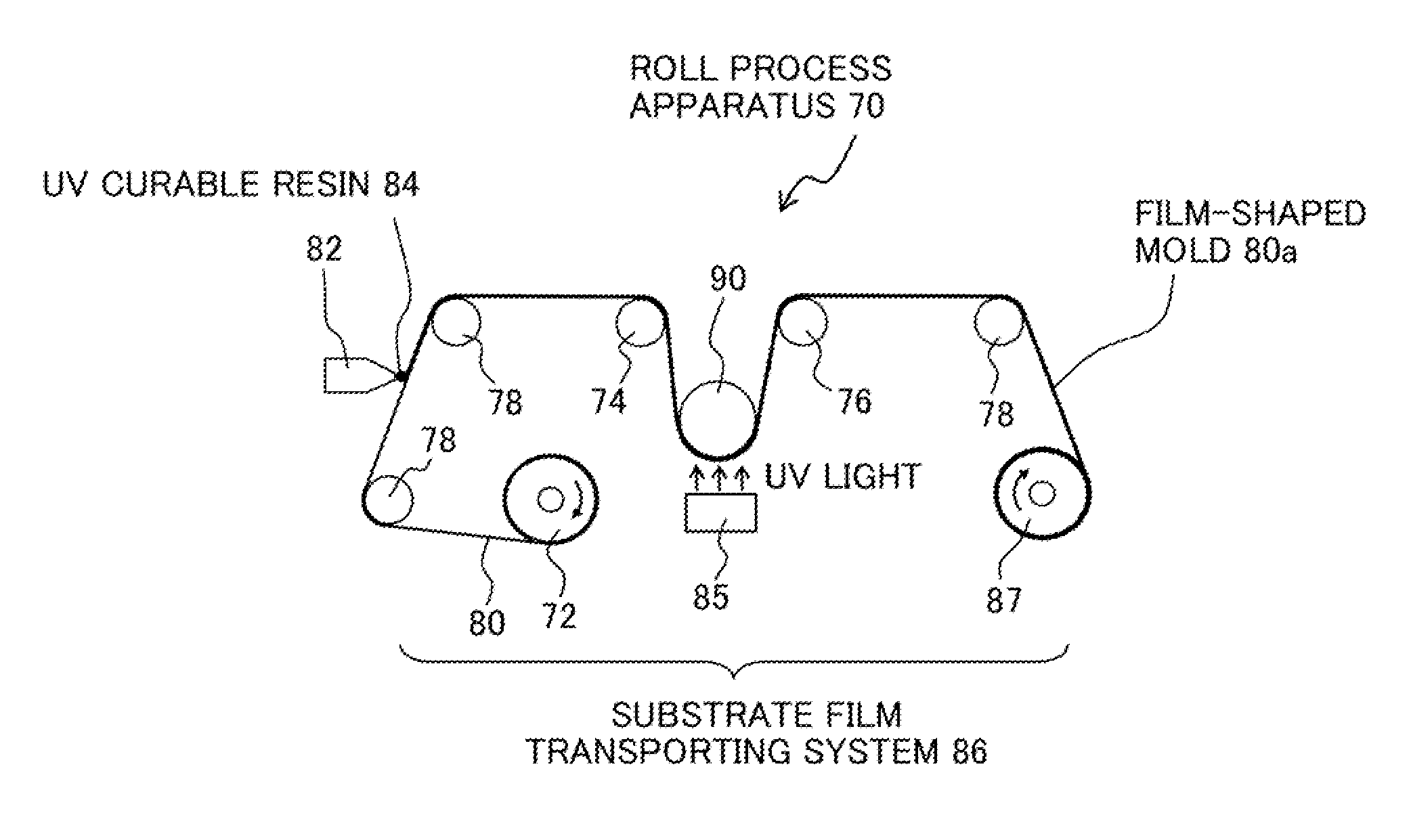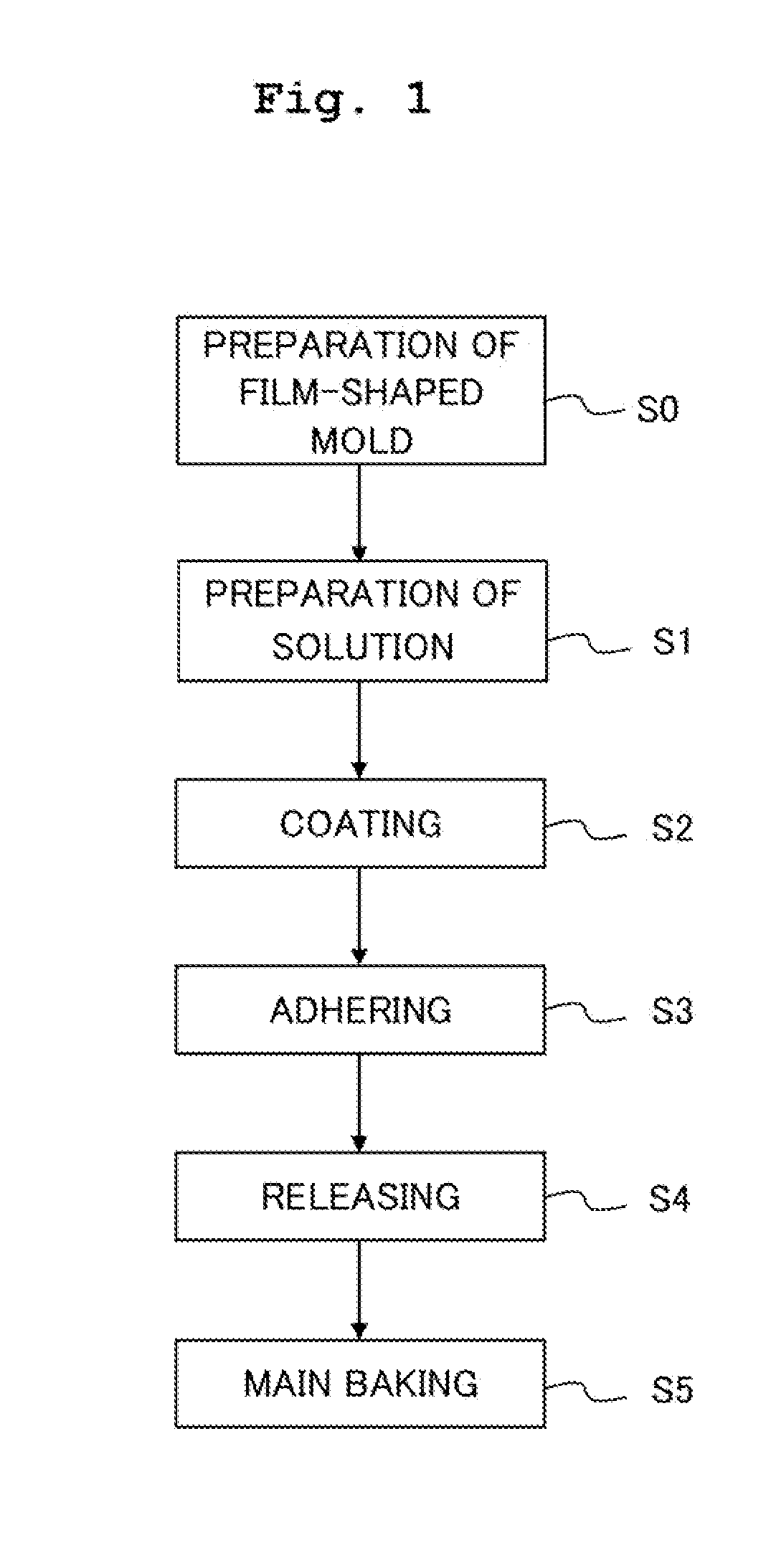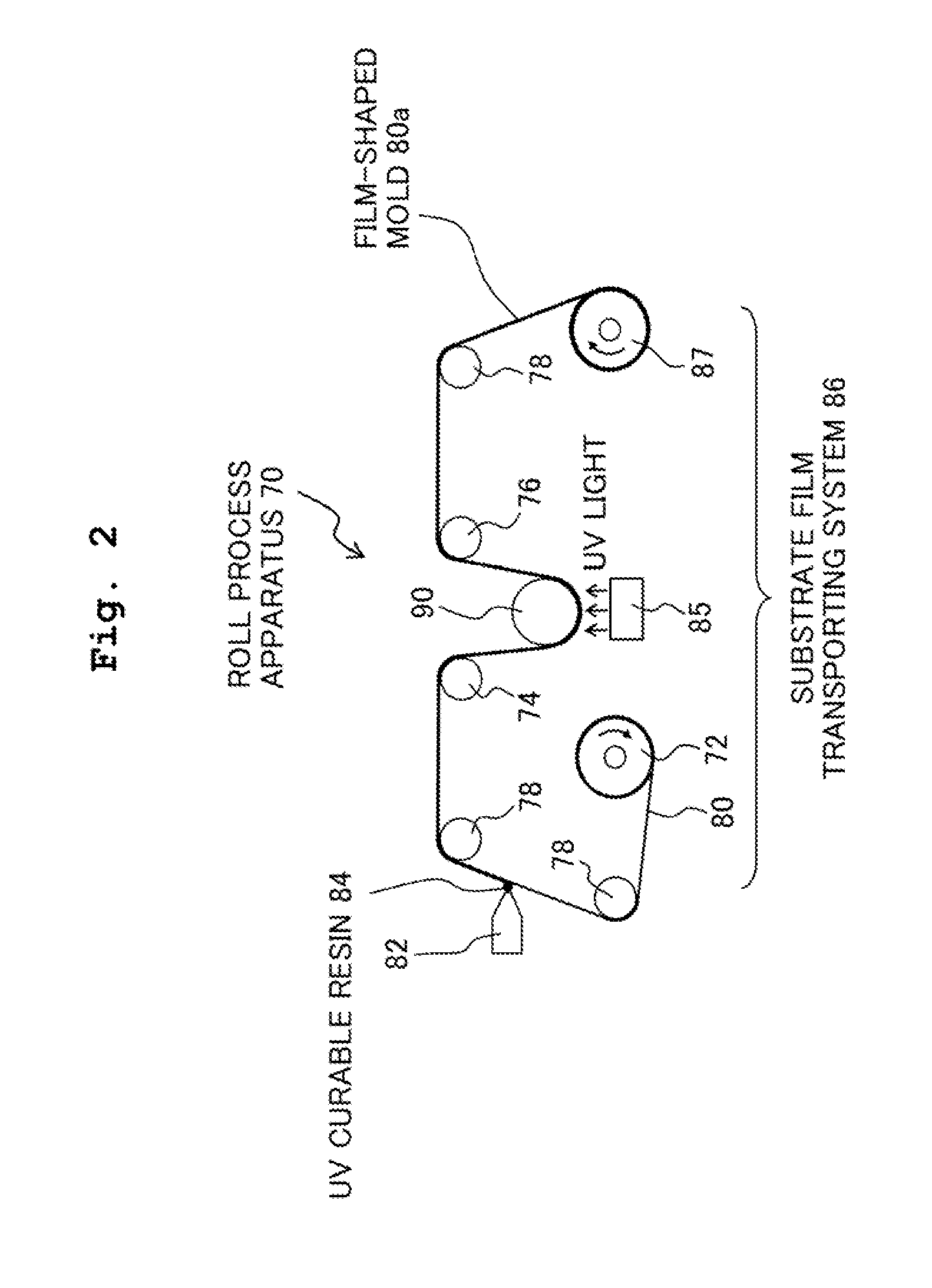Manufacturing method for optical substrate using film shaped mold, manufacturing device, and optical substrate obtained thereby
a manufacturing device and optical substrate technology, applied in the direction of dough shaping, manufacturing tools, instruments, etc., can solve the problems of low heat resistance of photo-curable resin as described above, high cost and difficulty in both technically and economically, and achieve accurate and reliable pattern transfer, high throughput, and weather resistance excellent
- Summary
- Abstract
- Description
- Claims
- Application Information
AI Technical Summary
Benefits of technology
Problems solved by technology
Method used
Image
Examples
first modification
[First Modification]
[0114]Although the peeling roll is provided on the optical substrate-producing apparatus 100 of the above-described embodiment, the peeling roll may be omitted as depicted in FIG. 5. In the apparatus depicted in FIG. 5, the film-shaped mold 80a fed from the mold feeding roll 21 (see FIG. 4) is pressed against the coating film 42 with a hot pressing roll 22, and then the film-shaped mold 80a is taken up or lifted with the mold take-up roll 24 (see FIG. 4) positioned above the substrate 40. By heating the pressing roll 22 and / or using any other heating means, the peeling (releasing) of the mold from the coating film immediately after the pressing is promoted and the pre-baking of the coating film can be performed.
second modification
[Second Modification]
[0115]In the optical substrate-producing apparatus 100 of the above-described embodiment, it is allowable to appropriately change the peeling angle (releasing angle) at which the film-shaped mold 80a is peeled (released) from the coating film 42 so as to further facilitate the peeling (releasing) of the film-shaped mold 80a from the coating film 42. For example, as depicted in FIG. 6, the peeling angle of the film-shaped mold 80a can be changed by the following manner. Namely, at first, the height at which the rotating rolls 36 are arranged is changed, at the releasing section 160, from the height at which the rotating rolls are arranged in the upstream of the releasing section 160 so as to incline the transporting direction of the substrate 40; further, in the releasing section 160, the arrangement position of the peeling roll 23 is changed in accordance with the inclination in the transporting direction of the substrate 40 so that the releasing rolls 23, the f...
third modification
[Third Modification]
[0116]Although the heater 22a is provided inside the pressing roll 22 in the optical substrate-producing apparatus 100 of the above-described embodiment, it is allowable to adopt a configuration as depicted in FIG. 7, instead of the configuration having the heater for heating the pressing roll 22. As depicted in FIG. 7, a heater 22b may be provided inside a heat zone 35 arranged at the periphery of the pressing roll 22 of the pressing section 150, rather than providing the heater inside the pressing roll 22. Since the heater is provided in the heat zone 35, the inside of the heat zone 35 is maintained at a heating temperature. In this case, the coating film 42 is subjected to the pre-baking in the heat zone 35. Note that the heater may be provided not only inside the heat zone 35 but also inside the pressing roll 22 and / or inside the supporting roll 26. Further, it is also allowable to provide several pieces of heating rolls, each of which has a heater provided t...
PUM
| Property | Measurement | Unit |
|---|---|---|
| Nanoscale particle size | aaaaa | aaaaa |
| Nanoscale particle size | aaaaa | aaaaa |
| Nanoscale particle size | aaaaa | aaaaa |
Abstract
Description
Claims
Application Information
 Login to View More
Login to View More - R&D
- Intellectual Property
- Life Sciences
- Materials
- Tech Scout
- Unparalleled Data Quality
- Higher Quality Content
- 60% Fewer Hallucinations
Browse by: Latest US Patents, China's latest patents, Technical Efficacy Thesaurus, Application Domain, Technology Topic, Popular Technical Reports.
© 2025 PatSnap. All rights reserved.Legal|Privacy policy|Modern Slavery Act Transparency Statement|Sitemap|About US| Contact US: help@patsnap.com



